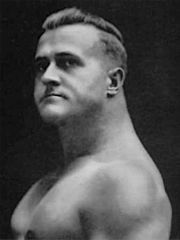 Brian Carson takes a brief look at 1920s bodybuilder and strongman Earle E. Liederman, who claimed several famous pupils including Jowett and Hyson. Very interesting.
Brian Carson takes a brief look at 1920s bodybuilder and strongman Earle E. Liederman, who claimed several famous pupils including Jowett and Hyson. Very interesting.
Results matching “bodybuilder”
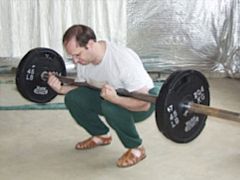
What is the Zercher Squat?
To the uninitiated, the Zercher Squat is a strange beast. Instead of the bar being held across the shoulders (slightly higher or lower for Olympic Weightlifters, Bodybuilders and Powerlifters); it's held in the crook of your arms. The inside of your elbows, if you like.
This is somewhat painful (although you do get used to it a little), however it's an extremely effective exercise. As Louie Simmons notes in Dead Lift Secrets :
It teaches you exactly how to squat. It teaches you to push your knees apart. Push your chest up. Push your buttocks out. The whole nine yards.
Origins
The Zercher Squat was one of the many cruel and unusual exercises created by St Louis strongman Ed Zercher (1902 - 1995). Zercher's own home gym resembled a junkyard more than a basement, and was filled with such toys as anvils, wrecking balls and assorted pieces of machinery. Sounds perfect.
Technique
This is one of the rare exercises where using a thick bar actually makes it more comfortable. A strongman yoke with an adjustable crossbar is great; a thick (2.5" - 3") barbell is also a good choice.
The lift comprises two stages, although it is common to see only the second one being performed in gyms.
The weighted bar begins on the floor, and is deadlifted (using a conventional, or shoulder-width stance) to a point a little above the knee. Aim for the lower quad muscles, rather than your kneecaps.
Slowly squat down; balancing the bar at this point on your lower thighs. Slide your arms under the bar until it reaches your elbows. Now stand up.
Simply reverse the process to complete the exercise. That's one rep.
NB : You may notice that this movement resembles the action of lifting a heavy stone, and it can be a great way to help train for such an event.
How to hold the bar
Regardless of how you hold the bar, there'll be some pain involved. Whilst you can probably ignore it when there's 50kg on the bar, it's a different story when the bar weighs 200kg.
There are three things to consider here. Experiment with them and find the combination that feels right to you. They are :
How your hands are -
- as fists
- clasped together
How your forearms are -
- crossed over
- bringing your hands together
- straight ahead (or at a slight angle)
What the bar is resting against -
- your skin
- a board
- something soft, such as a towel
The videos below show a variety of these combinations.
 This is the first in a series of Timeless Exercises; a collaboration with Run to Win's Blaine Moore. The Zercher Squat.
This is the first in a series of Timeless Exercises; a collaboration with Run to Win's Blaine Moore. The Zercher Squat.
What is the Zercher Squat?
To the uninitiated, the Zercher Squat is a strange beast. Instead of the bar being held across the shoulders (slightly higher or lower for Olympic Weightlifters, Bodybuilders and Powerlifters); it's held in the crook of your arms. The inside of your elbows, if you like.
This is somewhat painful (although you do get used to it a little), however it's an extremely effective exercise. As Louie Simmons notes in Dead Lift Secrets :
It teaches you exactly how to squat. It teaches you to push your knees apart. Push your chest up. Push your buttocks out. The whole nine yards.
Origins
The Zercher Squat was one of the many cruel and unusual exercises created by St Louis strongman Ed Zercher (1902 - 1995). Zercher's own home gym resembled a junkyard more than a basement, and was filled with such toys as anvils, wrecking balls and assorted pieces of machinery. Sounds perfect.
Technique
This is one of the rare exercises where using a thick bar actually makes it more comfortable. A strongman yoke with an adjustable crossbar is great; a thick (2.5" - 3") barbell is also a good choice.
The lift comprises two stages, although it is common to see only the second one being performed in gyms.
The weighted bar begins on the floor, and is deadlifted (using a conventional, or shoulder-width stance) to a point a little above the knee. Aim for the lower quad muscles, rather than your kneecaps.
Slowly squat down; balancing the bar at this point on your lower thighs. Slide your arms under the bar until it reaches your elbows. Now stand up.
Simply reverse the process to complete the exercise. That's one rep.
NB : You may notice that this movement resembles the action of lifting a heavy stone, and it can be a great way to help train for such an event.
How to hold the bar
Regardless of how you hold the bar, there'll be some pain involved. Whilst you can probably ignore it when there's 50kg on the bar, it's a different story when the bar weighs 200kg.
There are three things to consider here. Experiment with them and find the combination that feels right to you. They are :
How your hands are -
- as fists
- clasped together
How your forearms are -
- crossed over
- bringing your hands together
- straight ahead (or at a slight angle)
What the bar is resting against -
- your skin
- a board
- something soft, such as a towel
The videos below show a variety of these combinations.
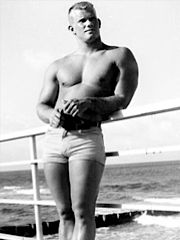 At Large Nutrition has a great interview with legendary bodybuilder Dr Ellington Darden. Enjoy.
At Large Nutrition has a great interview with legendary bodybuilder Dr Ellington Darden. Enjoy.
 At Large Nutrition has a great interview with legendary bodybuilder Dr Ellington Darden. Enjoy.
At Large Nutrition has a great interview with legendary bodybuilder Dr Ellington Darden. Enjoy.
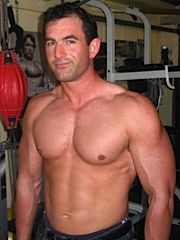 Natural Champion introduces New Zealand personal trainer and bodybuilder David Robson.
Natural Champion introduces New Zealand personal trainer and bodybuilder David Robson.
 Natural Champion introduces New Zealand personal trainer and bodybuilder David Robson.
Natural Champion introduces New Zealand personal trainer and bodybuilder David Robson.
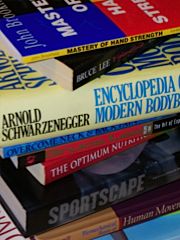
My ever-growing library contains a number of books on strength, health and fitness in general. Whilst there are a number available in these three areas, here are a few which have stood the test of time and never stray too far away :
Lou Schuler
I picked this up shortly after I started lifting free weights at home; largely as a reference for various exercises. Although it can quickly be put on the 'introductory' shelf, I occasionally refer to it for less common variations of well know moves such as the Towel Fly (a great one for anyone with polished wooden floors) and Prone Scarecrow.
Light on Yoga
BKS Iyengar
As with the Home Workout Bible, Light on Yoga serves as a great reference. At just under 500 pages this definitely classes as comprehensive, and explains in great detail more than 200 Asanas, or postures.
This book also covers the history of this fascinating practise, several routines for working towards specific health and fitness goals, and the oft-maligned area of breathing. Fascinating stuff.
John Brookfield
This is essential reading for anyone looking to increase their hand or forearm strength; no matter what their goals are. John Brookfield is truly a master of his craft, and this timeless volume clearly demonstrates why.
If hand strength is important to you, make sure you've got a copy of this on the shelf.
Steven Pratt M.D. and Kathy Matthews
I first came across the concept of Superfoods in the T-Nation article Power Foods, and quickly made my way to the nearest bookstore. At first I wondered why this book - which tells the story of 14 nutrient-dense foods - would list each of them on the back cover; but reading it I quickly discovered that there is much more to the story than a simple list.
This book details the reasons for including each of these foods in your diet (including discussions of research on the various nutrients contained within), common sources of each food type and ways in which to incorporate them.
A few small changes to your diet can make an enormous difference.
Dr Franco Columbu
Franco Columbu is perhaps best known as a bodybuilder with extraordinary strength. When it comes to the subject of nutrition, however, it's clear that he didn't achieve his infamy by accident; this book outlines the thinking he used to work his way up to Mr Olympia.
Although there are a few paragraphs that remind you that this book is more than 20 years old, the bulk of it contains sound, timeless nutritional advice that is relevant to anyone who enjoys the iron.
For a slightly more detailed review of this fascinating book, look no further than The Bodybuilder's Nutrition Book.
Joseph Hamill and Kathleen M. Knutzen
Sit in a quiet corner and put on your thinking caps for this one. This book details exactly how we move; whether lifting weights, playing sports or simply going though our daily activities. Although it is clearly intended as a textbook for students of biomechanics, I use it largely as a reference during periods of injury.
If you've ever wondered why it hurts here when you injured yourself there, this book has the answer.
Thomas Kurz
As you can see from the cover, when it comes to stretching Thomas Kurz knows his stuff. This superb book goes into great detail on the various types of stretching, working towards various flexibility goals, and potential injuries arising from improper technique.
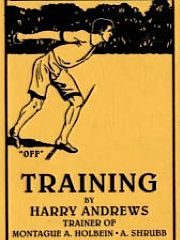
Harry Andrews
This book is a reprint of the 1911 volume by Harry Andrews, Training for Athletics and General Health. Harry Andrews was a running coach who clearly understood his trade. This book - although nearly a century old - contains some fascinating information which is still relevant to training techniques today.
Sportscape
Various
Sportscape details the history of sports photography over the past 100 years. Although it definitely performs well as a simple coffee table book - there are some superb images in there - it also helps to illustrate how our perceptions of sport have changed in that time.
If you've ever tried your hand at sports photography, or just admire the work of others, this is a very worthy addition to your collection.
Bruce Thomas
I initially picked this up simply as something to read on a lengthy bus trip. However, although there are many Bruce Lee biographies around, this one clearly stands out.
Written by martial artist Bruce Thomas, this book explores Lee's life in detail, giving a great insight into the thinking of this truly amazing individual.
Patrick Holford
This book is exactly what the title suggests - a comprehensive reference for the world of Optimum Nutrition. If you haven't already been exposed to this great area, Optimum Nutrition entails the consumption of sufficient foods and supplements to not simply meet the minimum Government-advised guidelines, but to ensure the greatest health benefits.
As suggested above, this book serves as a great reference whenever specific nutritional questions arise; not only covering the exact functions of various vitamins and minerals, but also outlining the treatment of many common medical complaints.
Bruce Lee and John Little
This book outlines Bruce Lee's training like no other. Based on Lee's own notes, The Art of Expressing the Human Body discusses his bodyweight, cardiovascular and strength training during the many phases of his brief career.
If you've ever seen an exercise being performed and thought to yourself 'I'm sure I've seen that somewhere before', chances are that it's in this book. Superb.
The Art of Expressing the Human Body is covered in more detail here.
Arnold Schwarzenegger
I must admit, I use this one mainly as a reference to the Golden Age of bodybuilding. Not only are there some great photos in there, but as a resource on some of the biggest names from the '70s it's second to none.
Overcome neck and back pain
Kit Laughlin
As the title suggests, this is a great resource for anyone who's ever experienced back or neck pain. Whilst this does not purport to be a cure-all for any variety of neck or back pain, there are some great ideas in there.
Well worth a look.
 This is the second part of this month's series on books; a collaboration with Run to Win's Blaine Moore.
This is the second part of this month's series on books; a collaboration with Run to Win's Blaine Moore.
My ever-growing library contains a number of books on strength, health and fitness in general. Whilst there are a number available in these three areas, here are a few which have stood the test of time and never stray too far away :
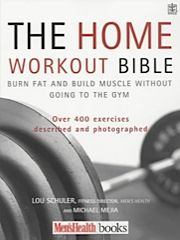
The Home Workout Bible
Lou Schuler
I picked this up shortly after I started lifting free weights at home; largely as a reference for various exercises. Although it can quickly be put on the 'introductory' shelf, I occasionally refer to it for less common variations of well know moves such as the Towel Fly (a great one for anyone with polished wooden floors) and Prone Scarecrow.
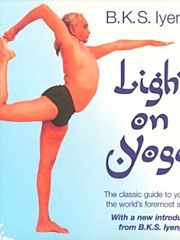
Light on Yoga
BKS Iyengar
As with the Home Workout Bible, Light on Yoga serves as a great reference. At just under 500 pages this definitely classes as comprehensive, and explains in great detail more than 200 Asanas, or postures.
This book also covers the history of this fascinating practise, several routines for working towards specific health and fitness goals, and the oft-maligned area of breathing. Fascinating stuff.
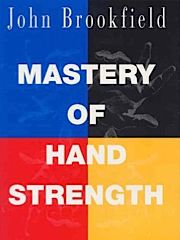
Mastery of hand strength
John Brookfield
This is essential reading for anyone looking to increase their hand or forearm strength; no matter what their goals are. John Brookfield is truly a master of his craft, and this timeless volume clearly demonstrates why.
If hand strength is important to you, make sure you've got a copy of this on the shelf.
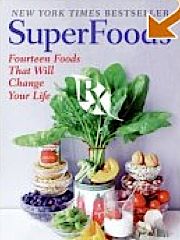
Superfoods
Steven Pratt M.D. and Kathy Matthews
I first came across the concept of Superfoods in the T-Nation article Power Foods, and quickly made my way to the nearest bookstore. At first I wondered why this book - which tells the story of 14 nutrient-dense foods - would list each of them on the back cover; but reading it I quickly discovered that there is much more to the story than a simple list.
This book details the reasons for including each of these foods in your diet (including discussions of research on the various nutrients contained within), common sources of each food type and ways in which to incorporate them.
A few small changes to your diet can make an enormous difference.
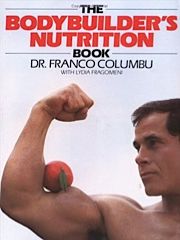
The Bodybuilder's nutrition book
Dr Franco Columbu
Franco Columbu is perhaps best known as a bodybuilder with extraordinary strength. When it comes to the subject of nutrition, however, it's clear that he didn't achieve his infamy by accident; this book outlines the thinking he used to work his way up to Mr Olympia.
Although there are a few paragraphs that remind you that this book is more than 20 years old, the bulk of it contains sound, timeless nutritional advice that is relevant to anyone who enjoys the iron.
For a slightly more detailed review of this fascinating book, look no further than The Bodybuilder's Nutrition Book.
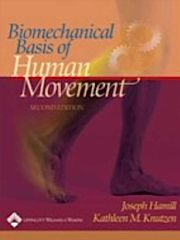
Biomechanical basis of human movement
Joseph Hamill and Kathleen M. Knutzen
Sit in a quiet corner and put on your thinking caps for this one. This book details exactly how we move; whether lifting weights, playing sports or simply going though our daily activities. Although it is clearly intended as a textbook for students of biomechanics, I use it largely as a reference during periods of injury.
If you've ever wondered why it hurts here when you injured yourself there, this book has the answer.
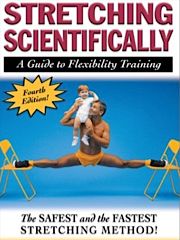
Stretching scientifically
Thomas Kurz
As you can see from the cover, when it comes to stretching Thomas Kurz knows his stuff. This superb book goes into great detail on the various types of stretching, working towards various flexibility goals, and potential injuries arising from improper technique.
 Training
Training
Harry Andrews
This book is a reprint of the 1911 volume by Harry Andrews, Training for Athletics and General Health. Harry Andrews was a running coach who clearly understood his trade. This book - although nearly a century old - contains some fascinating information which is still relevant to training techniques today.
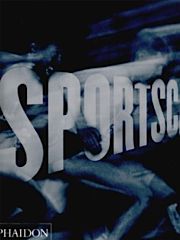
Sportscape
Various
Sportscape details the history of sports photography over the past 100 years. Although it definitely performs well as a simple coffee table book - there are some superb images in there - it also helps to illustrate how our perceptions of sport have changed in that time.
If you've ever tried your hand at sports photography, or just admire the work of others, this is a very worthy addition to your collection.
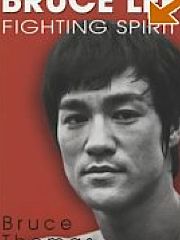
Bruce Lee - Fighting spirit
Bruce Thomas
I initially picked this up simply as something to read on a lengthy bus trip. However, although there are many Bruce Lee biographies around, this one clearly stands out.
Written by martial artist Bruce Thomas, this book explores Lee's life in detail, giving a great insight into the thinking of this truly amazing individual.
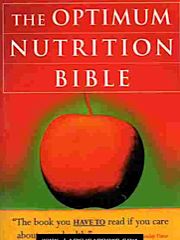
The Optimum nutrition bible
Patrick Holford
This book is exactly what the title suggests - a comprehensive reference for the world of Optimum Nutrition. If you haven't already been exposed to this great area, Optimum Nutrition entails the consumption of sufficient foods and supplements to not simply meet the minimum Government-advised guidelines, but to ensure the greatest health benefits.
As suggested above, this book serves as a great reference whenever specific nutritional questions arise; not only covering the exact functions of various vitamins and minerals, but also outlining the treatment of many common medical complaints.
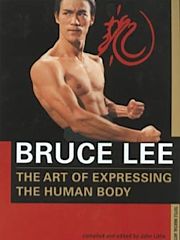
The Art of Expressing the Human Body
Bruce Lee and John Little
This book outlines Bruce Lee's training like no other. Based on Lee's own notes, The Art of Expressing the Human Body discusses his bodyweight, cardiovascular and strength training during the many phases of his brief career.
If you've ever seen an exercise being performed and thought to yourself 'I'm sure I've seen that somewhere before', chances are that it's in this book. Superb.
The Art of Expressing the Human Body is covered in more detail here.
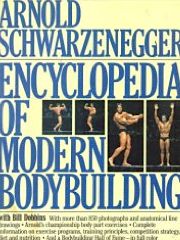
Encyclopedia of Modern Bodybuilding
Arnold Schwarzenegger
I must admit, I use this one mainly as a reference to the Golden Age of bodybuilding. Not only are there some great photos in there, but as a resource on some of the biggest names from the '70s it's second to none.
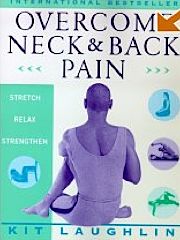
Overcome neck and back pain
Kit Laughlin
As the title suggests, this is a great resource for anyone who's ever experienced back or neck pain. Whilst this does not purport to be a cure-all for any variety of neck or back pain, there are some great ideas in there.
Well worth a look.
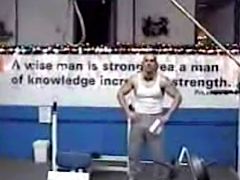 MMA athlete Mike Bruce, a man who is already well known for demonstrating extraordinary neck strength in his workouts (such as seated neck extensions with plates totalling his bodyweight), performs a strongman feat not seen for over 20 years (bodybuilder-turned-strongman Mike Dayton was also famous for this feat). There is a very good reason for this, as you'll see in the video [streaming, 9.8mb .flv download].
MMA athlete Mike Bruce, a man who is already well known for demonstrating extraordinary neck strength in his workouts (such as seated neck extensions with plates totalling his bodyweight), performs a strongman feat not seen for over 20 years (bodybuilder-turned-strongman Mike Dayton was also famous for this feat). There is a very good reason for this, as you'll see in the video [streaming, 9.8mb .flv download].
Whatever you do, don't try this one. Seriously.













